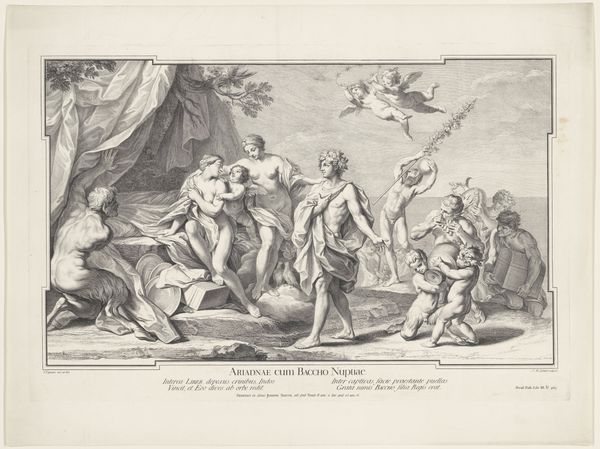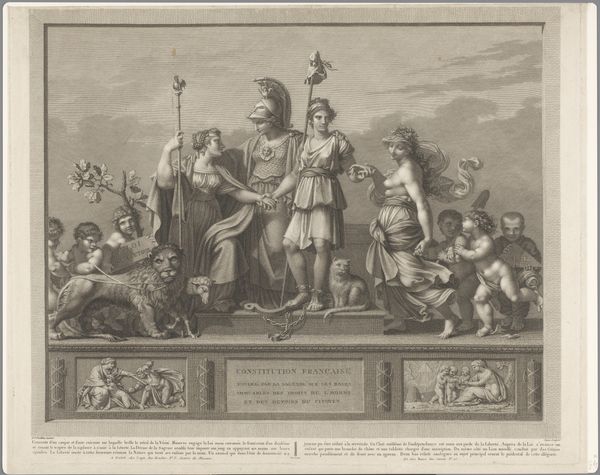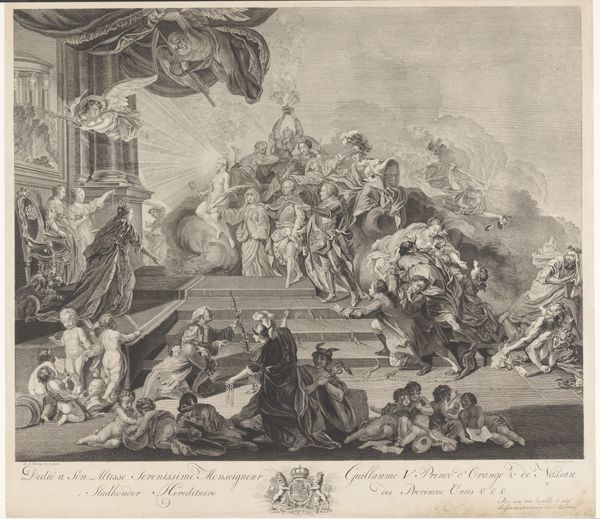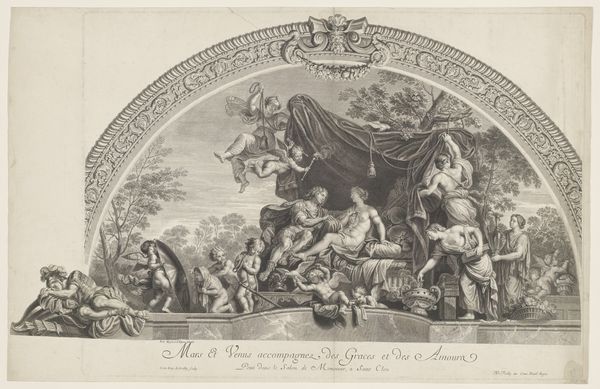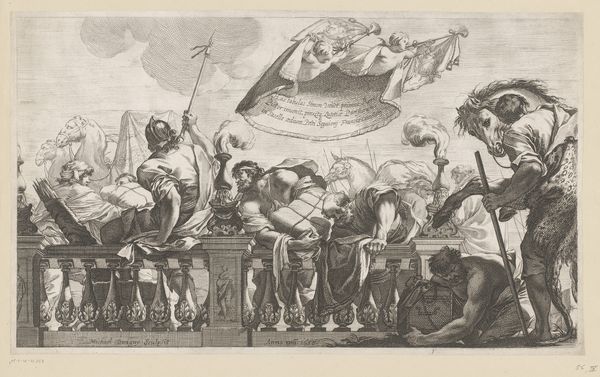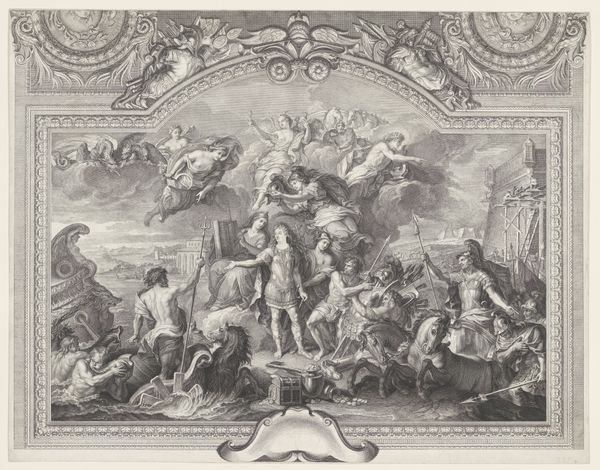
Zinneprent van de aankomst van Johan Willem Friso en Maria Louisa te Leeuwarden after 1710
0:00
0:00
matthijspool
Rijksmuseum
print, engraving
#
narrative-art
#
baroque
# print
#
charcoal art
#
cityscape
#
history-painting
#
engraving
Dimensions: height 599 mm, width 801 mm
Copyright: Rijks Museum: Open Domain
Curator: What a whirlwind of emotions this image stirs. All at once grandiose and subtly disquieting. Editor: This engraving by Matthijs Pool, made after 1710 and held at the Rijksmuseum, is entitled "Zinneprent van de aankomst van Johan Willem Friso en Maria Louisa te Leeuwarden," which translates to something like 'Allegorical print of the arrival of Johan Willem Friso and Maria Louisa in Leeuwarden.' Curator: "Allegorical" is doing some heavy lifting there. Look at the way the figures are arranged: classical motifs clash with an almost caricatured portrayal of power. Note the vanquished figures at the bottom - victims erased and replaced by this performative unity of Friso and Louisa. Editor: It is undeniably baroque in its style, all sweeping gestures and dramatic lighting, even in the limitations of the engraving medium. These celebrations functioned as carefully orchestrated public relations events, shaping perceptions and solidifying power through imagery. Curator: Absolutely. The female figures, almost like mannequins, draped in fabrics…it underscores a lack of agency and illustrates a dynastic transaction rather than an embodiment of national unity. We need to question whose narrative this art reinforces and whose voices it silences. Even in what seems like a depiction of celebratory welcome there’s an implicit threat. Editor: That’s precisely the kind of interrogation necessary for interpreting these images today. Consider, for instance, how cities leveraged visual media in the 18th century to construct identity, often mythologizing leadership in the process. These images not only served to document but also to actively construct the event's narrative for future generations. Curator: Exactly. It's imperative to consider who commissioned this piece, what agenda it served, and how we can disrupt a reading that solely perpetuates a historical narrative of unchallenged authority. There is, too, an artistic and aesthetic violence that demands our recognition. Editor: This print speaks to the power of images as political instruments. I'm interested in this Baroque visual strategy being an entry point into questions of how power still uses imagery now. Curator: I agree; seeing this print forces a critical examination of how images participate in the power dynamics and the stories we tell, both then and now.
Comments
No comments
Be the first to comment and join the conversation on the ultimate creative platform.
